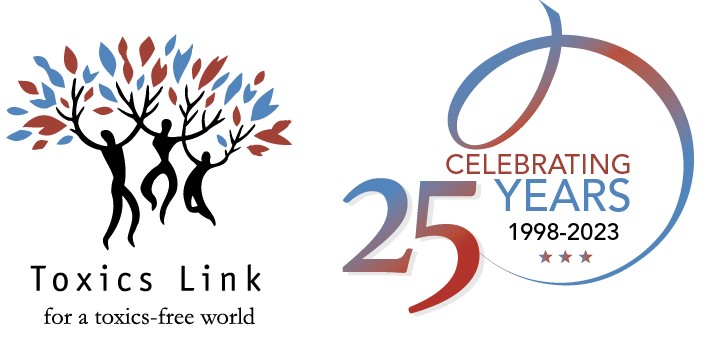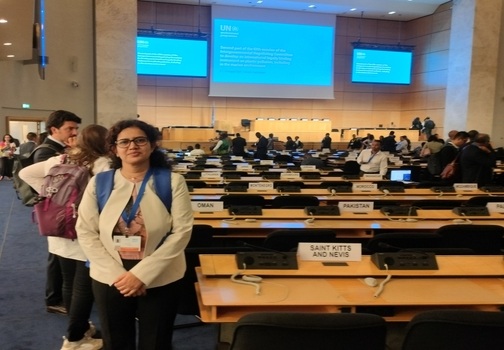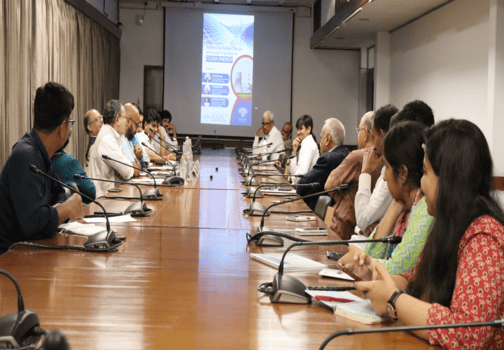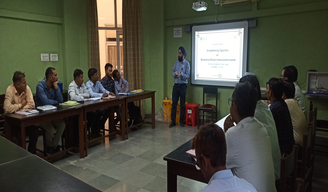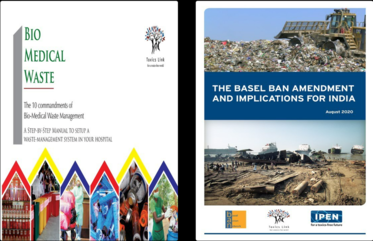Management of e-waste in the country
GOVERNMENT OF INDIA
MINISTRY OF ENVIRONMENT, FOREST AND CLIMATE CHANGE
RAJYA SABHA
UNSTARRED QUESTION NO. 1011
TO BE ANSWERED ON 10.02.2022
Management of e-waste in the country
1011. SHRI VAIKO:
Will the Minister of ENVIRONMENT, FOREST AND CLIMATE CHANGE be pleased to state:
(a) the details of statutory regulations to manage e-waste in the country;
(b) whether any efforts have been made to segregate hazardous and toxic substancesfrom
the metallic wastes in the country;
(c) whether adequate measures have been taken for safe storage and pollution
controlfrom e-waste;
(d) whether it will not lead to adverse impact on health and environment in the absence
ofcompliance of regulations and strict monitoring of handling of hazardous and
toxicsubstances; and
(e) if so, mechanism put in place for strict monitoring and compliance of regulations
invarious parts of the country, the details thereof?
ANSWER
MINISTER OF STATE IN THE MINISTRY OF ENVIRONMENT, FOREST AND CLIMATE CHANGE
(SHRI ASHWINI KUMAR CHOUBEY)
(a)The management of e-waste is being carried out under the frame work of E-Waste
(Management) Rules, 2016 and amendments there off. The Rules, are effective from
01.10.2016. The rules provide for followings:
- Applicable to every manufacturer, producer, consumer, bulk consumer, collection
centres, dealers, e-retailer, refurbisher, dismantler and recycler involved in
manufacture, sale, transfer, purchase, collection, storage and processing of e-waste or
electrical and electronic equipment listed in Schedule I, including their components,
consumables, parts and spares which make the product operational.
- Under the EPR regime, producers have to obtain EPR Authorization from CPCB for
which they have to submit their sales data and EPR Plan to CPCB detailing their
strategy for collection of E-Waste, awareness plan, budget for implementing their
EPR and details of their dismantlers/recyclers.
iii. Notified EEE are twenty-one (21) and listed in Schedule – I of the above said Rules
under two categories namely ‘information technology and telecommunication
equipment’ and ‘consumer electrical and electronics equipment’.
- Under EPR regime producers of notified EEE, have been given annual E-Waste
collection targets based on the generation from the previously sold EEE or based on
sales of EEE as the case may be.
- Under the above said rules, import of EEE is allowed only to producers having
Extended Producer Responsibility authorisation(EPRA).
- Under the above said rules, operation without Extended Producer ResponsibilityAuthorisation by any producer, as defined in this rule, shall be considered as causing
damage to the environment.
vii. Under the above rules, recyclers, dismantlers, refurbishes of e-waste have to have
facilities for environmentally sound processing of the e-waste as the case may be and
have to obtain authorisation from the concerned SPCBs/PCCs.
viii. Under the above rules, limits have been given for hazardous substances in the
components of EEE being placed on the market
(b) Ministry has notified the Hazardous and Other Wastes (Management and
Transboundary Movement) Rules, 2016 as amended from time to time to ensure management
of hazardous and other wastes in an environmentally sound manner without causing adverse
effect on environment and human health. As per the rules, hazardous waste has been defined
as any waste which by reason of characteristics such as physical, chemical, biological,
reactive, toxic, flammable, explosive or corrosive, causes danger or is likely to cause danger
to health or environment, whether alone or in contact with other wastes or substances, and
shall include wastes as applicable in respect of Schedule I, Schedule II and Schedule III of
the rules. The said definition has been stipulated under Rule 3 (1) (17) of the HOWM Rules,
2016.Therefore, any metallic waste possessing characteristic defined for hazardous wastes
shall be managed under provisions of the said rules. Hazardous wastes are preferred to be
recycled/utilized as resource/energy recovery (including co-processing in cement)/ and
disposed through incineration or secured landfilling.
(c) As per the provisions of E-Waste (Management) Rules, 2016, guidelines have been
developed by Central Pollution Control Board (CPCB) for safe storage of e-waste and all the
stakeholders have to store their e-waste as per the guidelines. As per the said rules, every
producer, collection centre, dealer, dismantler, recycler and refurbisher may store the e-waste
for a period not exceeding one hundred and eighty (180) days and shall maintain a record of
collection, sale, transfer and storage of wastes and make these records available for
inspection. The period of storage of one hundred and eighty (180) days may be extended by
the concerned SPCBs/PCCs up to three hundred and sixty-five (365) days in case the e-waste
needs to be specifically stored for research development of a process for its recycling or
reuse. The storage of end of life products has to be done in a manner which does not lead to
breakage of these products and safe to workers handling such products.
(d) The electronic and electrical equipment (EEE) after their useful life when they
become E-Waste, may not cause any harm to health and environment if it is stored safely.
However, if un-scientific and crude methods are used for processing for retrieval of useful
components or material or if the material is disposed in open, then it may cause health risks
and damage to environment.Non-compliance of the E-Waste (Management) Rules, 2016 and
HOWM Rules, 2016 may lead to adverse impact on environment and human health.
(e) Following Steps have been taken by the government for effective implementation of
the E-Waste (Management) Rules, 2016 and constant monitoring under the said rules:
- Implementation Guidelines for E-Waste (Management) Rules, 2016 comprising of
nine (9) specific guidelines have been prepared and uploaded on the web site of
Central Pollution Control Board (CPCB).
- Guidelines for Producer Responsibility Organizations (PRO) have been prepared
and uploaded on the web site of CPCB.
iii. The guidelines for environmental compensation charges (ECC) under e-waste
rules have been prepared in December, 2020.
- An Action Plan is in place for enforcement of the e-waste rules in the country, and
is being implemented through State Pollution Control Boards (SPCBs)/ Pollution
Control Committees (PCCs). SPCBs/PCCs are submitting quarterly progress
report as envisaged in the Action Plan through a web portal developed for this
purpose.
- CPCB through SPCBs/PCCs has established a system of continuous verification of
the producer’s system of collection and verification of their compliance including
collection target. The SPCBs/PCCSs also has to continuously verify the
dismantlers and recyclers of e-waste. SPCBs/ PCCs are required to submit their
quarterly progress report trough a web portal in the system.
- There are 468 authorised Dismantlers/Recyclers in 22 States/UTs having
processing capacity of 13,85,932.22tonnes.
vii. Standard Operating Procedure (SoP) for grant of Extended Producer Responsibility
Authorisation (EPRA) under E-Waste (Management) Rules, 2016 has been
prepared for applicant where guidance has been provided for how to fill up
applications.
viii. Monitoring mechanisms for effective implementation of the e-waste Rules are
detailed below:
Annual and Quarterly returns fromExtended Producer Responsibility(EPR)
authorized Producers.
Annual Returns from PROs.
Annual returns from authorized Manufacturers, Dismantlers, Recyclers,
Refurbishers, Bulk Consumers to concerned SPCBs/PCCs.
Annual Report from SPCBs/PCCs to CPCB.
Annual Review Report from CPCB to MoEF&CC.
Random verifications of dismantler/ recyclers to ensure compliance of CPCB
guidelines.
Random inspection of EPRA producers (Collection centres) to ensure
compliance of EPR conditions.
